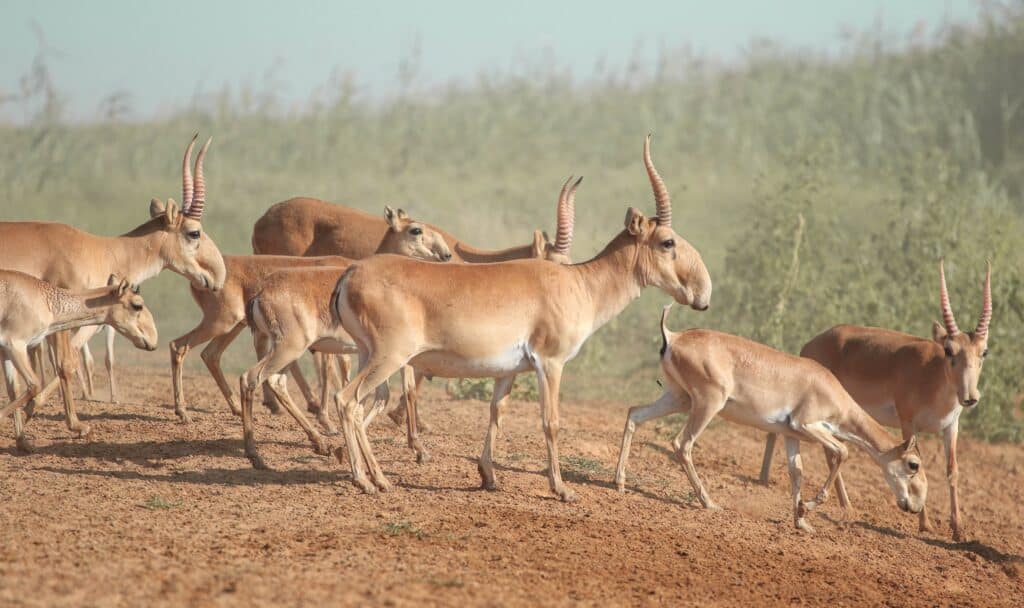Once endangered, saiga antelope now a growing problem for Russian farmers

Once on the brink of extinction, the saiga antelope has made an extraordinary recovery thanks to conservation efforts in Kazakhstan.
However, that success is now creating problems — not just for Kazakh farmers, but also for their Russian neighbors.
Russian grain fields under threat
Farmers in Russia’s Saratov region, one of the country’s top grain hubs, report that massive herds of migrating saigas are devastating their fields. The animals are crossing the border from Kazakhstan and causing widespread damage.
«They enter a field in herds of 14,000 and eat everything,» said Pavel Chikankov, a farmer in the Novouzensky district. «We’ll be left without a harvest this year. With locusts, you can at least fight them. But with saigas, it’s not clear what to do.»
The antelopes are protected under international conservation agreements. In Russia, they’re also listed in the national Red Book of endangered species.
According to the local news outlet 164.RU, about 60,000 saigas crossed into the Saratov region in the first half of 2024. That’s a sharp increase from previous years, when fewer than 150 animals arrived annually.
Farmers say the damage is uninsurable. Saigas are not included in the register of agricultural pests, so insurance policies do not cover their impact.
With no help from local authorities, farmers have turned to the Kremlin. They recorded a video message and sent a formal appeal to Russian President Vladimir Putin. So far, they say, they’ve received no response.
Conservation success leads to complications
In Kazakhstan, authorities face similar frustrations. Saiga populations have surged in the country due to decades of conservation efforts.
The population dropped to just 21,000 animals in 2003. However, since then, anti-poaching measures, a hunting ban and education campaigns have helped the population grow to 4.1 million by May 2025. After the upcoming lambing season, the number is expected to exceed 5 million.
Kazakhstan had previously approved a limited culling program to manage the saiga population. The goal was to reduce numbers to one million, with up to 20% of the herd culled annually.
However, widespread public outcry and environmental protests led to a halt in those efforts. In 2024, President Kassym-Jomart Tokayev reaffirmed the ban on saiga culling. He called the antelope «a symbol of the Kazakh steppe.»
Even so, Kazakh officials are seeking other ways to reduce pressure on farmland. The Ministry of Agriculture is offering subsidies for fencing and nets to protect crops.
They are also preparing for a possible return to population control. Officials say 13 meat plants are ready to process up to 3,700 saigas per day. Any future regulation efforts, they note, would follow strict veterinary and sanitary protocols.


